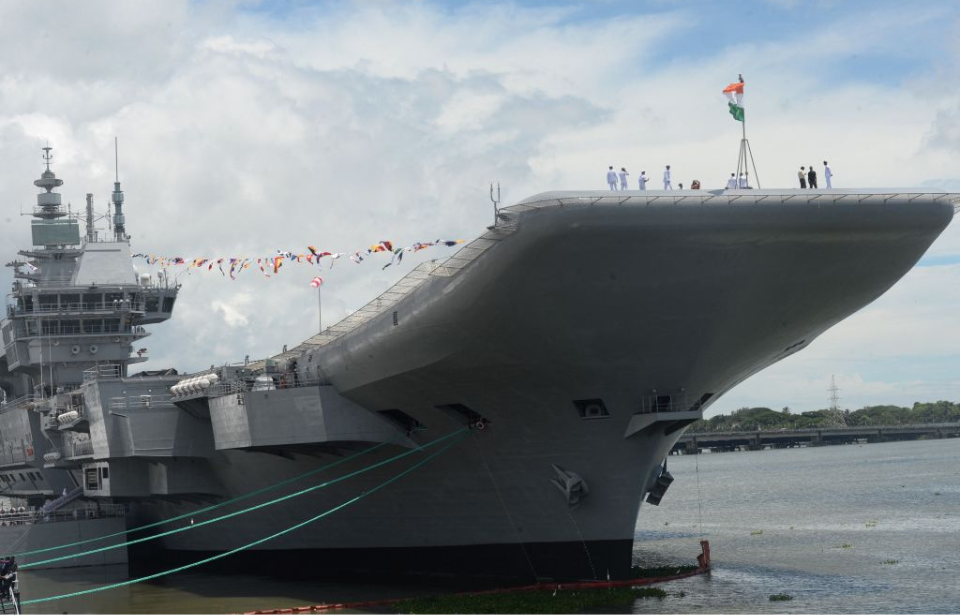The Indian Navy has officially commissioned its first home-built aircraft carrier. Nearly 20 years after it was ordered, the INS Vikrant, whose name is Sanskrit for “powerful” or “courageous,” comes at a time when India is contending with rising tensions with China, with whom the country shares a 2,167-mile border.
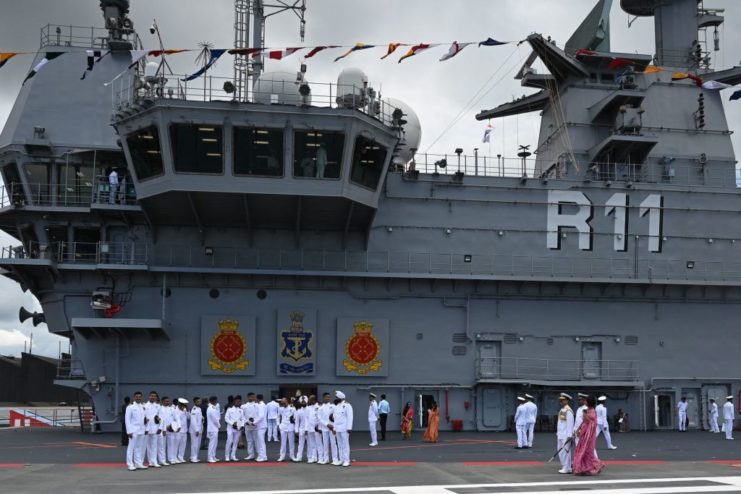
The 262-meter-long aircraft carrier was designed by the Indian Navy and built at Cochin Shipyard in the country’s south. The construction process endured a six-year delay, which caused the price of the vessel to balloon to around $2.5 billion. She features over 75 percent indigenous components, with six major industrial firms and more than 100 small businesses providing machinery and equipment.
Prime Minister Narendra Modi commissioned the vessel as part of India’s commemoration of being free from British rule for 75 years. During his speech, he highlighted that Vikrant‘s introduction into the navy makes India just one of five countries with an indigenous aircraft carrier program. The nation is also only the third to launch a carrier in the past three years, along with the United Kingdom and China.
“It’s a historic day and landmark achievement,” Modi said. “It’s an example of the government’s thrust to make India’s defense sector self-reliant.”
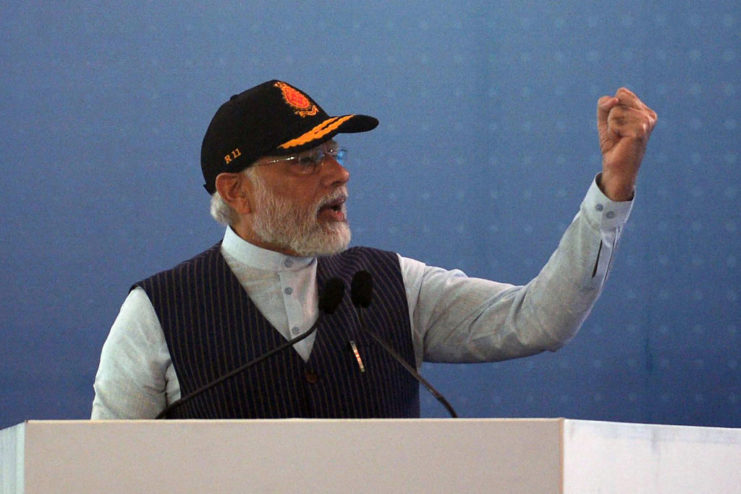
India is among the world’s largest arms importers, and Modi’s government has placed an emphasis on building up a domestic defense hardware industry to reduce the country’s dependence on foreign weaponry. Vikrant is the second operational aircraft carrier to join the Indian Navy’s fleet. The other, the Soviet-era INS Vikramaditya, was purchased from Russia in 2004 to defend the Bay of Bengal and the Indian Ocean.
Vikrant is the largest warship to be constructed in India and has the capability to house a crew of between 1,500 and 1,600. She’s also capable of operating a fleet of 30 aircraft, which the Indian Navy hopes will include the Boeing F/A-18 III Super Hornet and Dassault’s Rafale-M. Until that’s possible, the aircraft carrier will hold the Mikoyan MiG-29K, combat aircraft, the Kamov Ka-31 helicopter and the Sikorsky MH-60R Black Hawk.
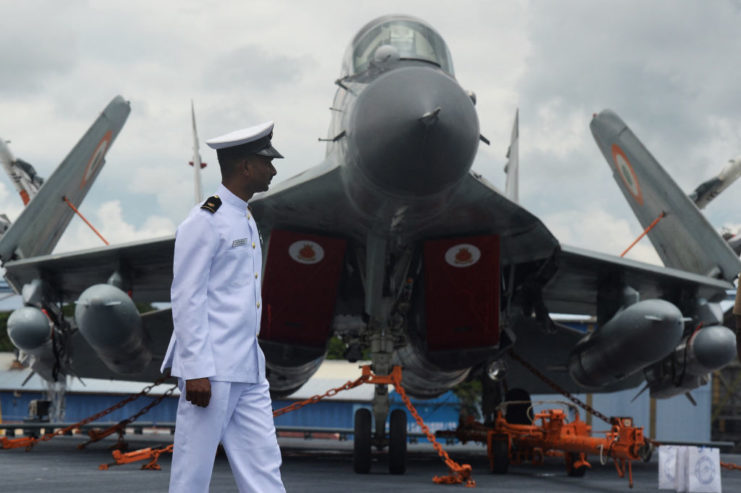
The introduction of Vikrant into the Indian Navy’s fleet comes at a time when China has increased its naval presence in the Western Pacific and Indian Ocean. While India had previously focused its defense efforts on Himalayan border disputes with China and Pakistan, it’s since updated its military strategy to include a better presence in the Indian Ocean.
In 2021, as part of the country’s efforts, the Indian Navy participated in military exercises with the United States, Australia and Japan in the South China Sea, Southeast Asia and in the Indo-Pacific. Recently, in August 2022, a Chinese naval ship docked in Sri Lanka, triggering a diplomatic dispute between China and India.
Many suspect this increased aggression is partially related to India’s relationship with the US, with the Chinese government accusing the latter of creating Cold War-esque blocs in the 21st century.
China has been rapidly modernizing its navy in recent years. Comprised of 355 ships and with three aircraft carriers currently in service, the latest of which features technology that was only before deployed by the US, the country is both technologically and numerically above the Indian Navy, whose fleet only consists of two aircraft carriers (including Vikrant), 20 corvettes, 12 frigates and 10 destroyers.
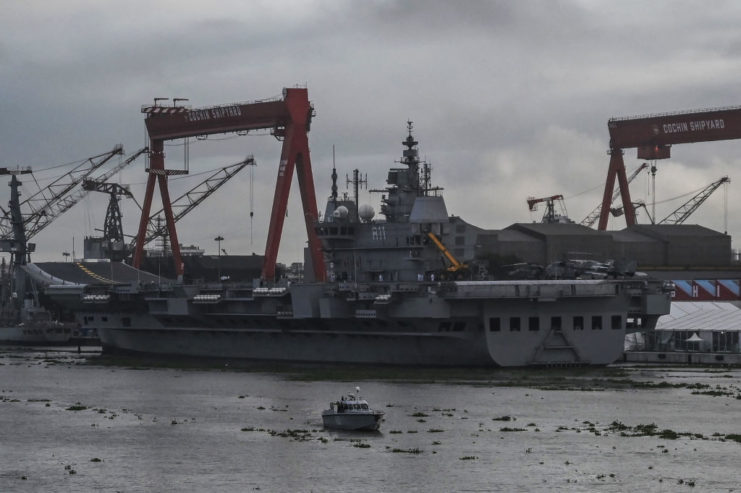
Speaking to The Washington Post, Rajeswari Pillai Rajagopalan, a former official with India’s National Security Country Secretariat, said, “China in the last decade has demonstrated it has significantly improved its competitiveness. You can expect a greater sense of urgency from the Indian side to work with the U.S. and build up its naval strength.”
These sentiments were echoed by Modi, who at Vikrant‘s launch said that the long-ignored security concerns of the Indo-Pacific will be of the utmost importance to India’s government and military going forward.
“The security concerns of the Indo-Pacific and the Indian Ocean were ignored earlier,” he said. “But today this area is a big defense priority of the country for us. So we are working in every direction, from increasing the budget for the navy to increasing its capacity.”
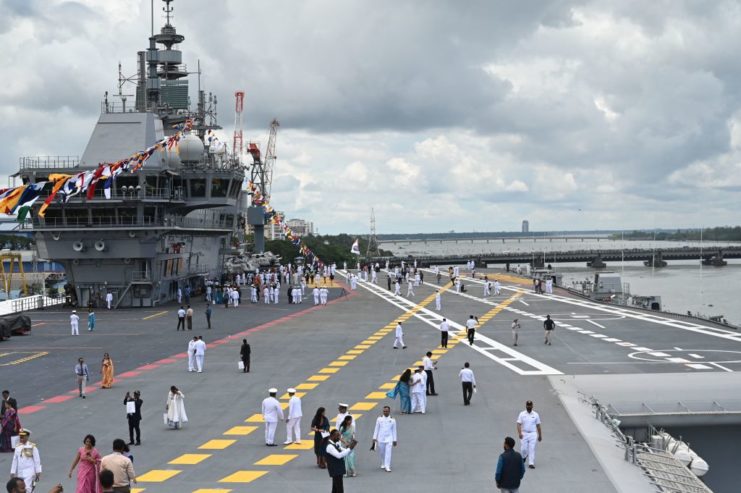
More from us: US Army Signs Deal with General Dynamics Land Systems to Send M1A2 Abrams to Poland
The INS Vikrant is expected to be fully operational by the end of 2023, after she has undergone trials with the Indian Navy’s fleet of MiG-29K fighters.
